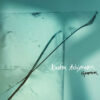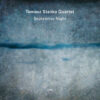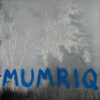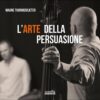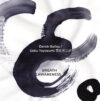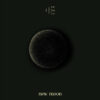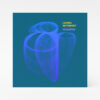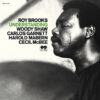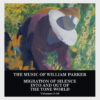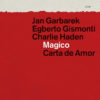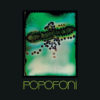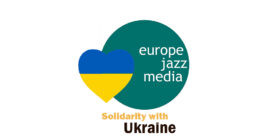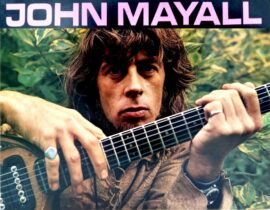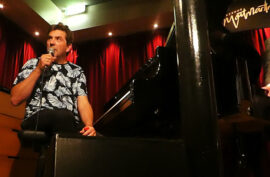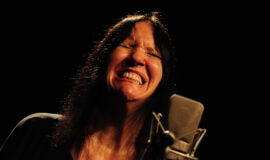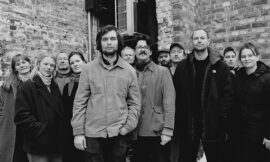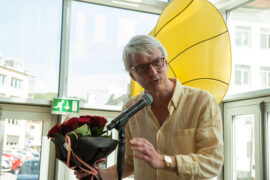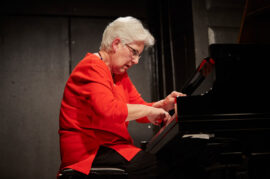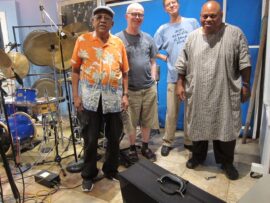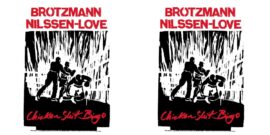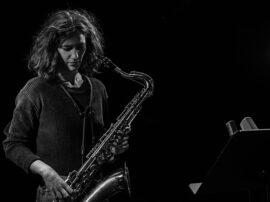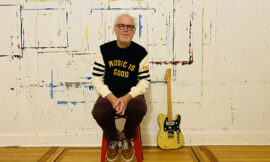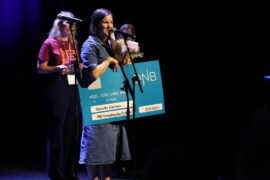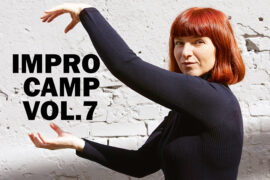
Glass Triangle is the free-improv trio of Danish alto sax player Mette Rasmussen with American electric harpist Zeena Parkins (now a professor of Composition at Mills College in Oakland) and drummer Ryan Sawyer and Blue and Sun-lights is the sophomore album of the trio following the self-titled album from 2021. This album, like the first album was recorded in a studio in Brooklyn, this time Figure 8 Recording, allowing the trio to fully explore its ecstatic, restless and shapeshifting dynamics.
Glass Triangle sharpened their interplay in a three-evening performance at New York’s The Stone. Parkins described the three-hour, early-morning recording session, during which they had to work around another band’s recording set-up, as a strange one and not aimed to yield any results, but thanks to the elusive x-factor of cosmic inspiration, sonic magic, and, obviously, experience, skill and profound chemistry it did.
Glass Triangle took its name from the work of sculptor Josiah McElheny and its fittingly sparklingly tactile sculptor was the cover art of its debut album. Blue and Sun-lights refers to another work of McElheny, a four-channel hallucinogenic film, made with filmmaker Jeff Preiss (Parkins’ partner), laying layers of an amalgamation of different types of moving imagery shot within publisher Christine Burgin’s personal library. The aesthetics of Glass Triangle, like the one of McElheny are multi-dimensional, richly textured and tactile.
Parking idiosyncratic and imaginative vocabulary on the heavily heavily-processed and effects-laden electric harp – that sounds like so many things but a conventional harp – is at the center of the hyperactive commotion of this democratic trio, and the one who ignites and cements the unique syntax of Glass Triangle. Rasmussen introduces urgent and sharp edges to the ecstatic, physical interplay and always pushes forward and adds voices, while Sawyer solidifies the frantic and fast-shifting interplay with fragmented rhythmic patterns. This trio always varies its tense narratives, tempts and seduces and pushes and pulls at one another, and moves naturally from intense but good-natured free jazz collisions to the melodic and harmonious agreement, and vice versa. This fearless and risk-taking trio can go anywhere, anytime, and always will explore more surprising sonic pleasures and magic. You may find yourself surrendering easily to this addictive and beautiful kind of free improvised music. Clearly, one of the best albums of 2023.
LACE is a long-term cycle of Parkins’ compositions, using images of Shetland lace knitting patterns as graphic scores for distinct musicians and ensembles to play, and building webs of sound that emerge from its contours. The uncommonly versatile Parkins began composing LACE in 2008 when she was commissioned by Merce Cunningham Dance Studio for Experiments in the Studio. The LACE box set includes a vinyl with two multi-movement LACE works, performed as a guided improvisation of percussionist William Winant and by an ensemble conducted by Parkins and featuring James Fei on electronics, cellist Maggie Parkins (Parkins’ sister), and TILT Brass a sextet. The box-set also presents the graphic scores, Parkins’ performance instructions, an interview with Parkins by arts writer-scholar Jenn Joy, a poem by late poet Steve Dalachinsky composed from the live performance of this recorded version of «LACE 1» and one lace bobbin.
The LACE works reflect Parkins’ great interest in textiles, and each movement asks the musician or ensemble to approach the image from a different stance. «LACE 1. Edgings» is predicated on a far-gaze response to the stitch’s repetitive shapes and patterns, using only elements that you notice with a glance «LACE 2. Action Cards» consist of twenty-three individual lace cards that designate short bursts of an idea; the image is topographic and choreographic. Parkins also composed «LACE 3. Shetland Lace» for her Green Dome trio – with Sawyer and pianist Ryan Ross Smith that released Thinking in Stitches (Casestudy, 2019).
Parkins says: «In paying close attention to lace’s details: its twists and knots, interconnecting threads, variety of stitches, and the patterns that surface, I’m imagining a conspiracy with the lace maker, usually a woman. My immersion into these embedded details evidences the unseen process of fabricating lace, and it’s my hope that this underscores the power and persistence of the lace maker’s labor».
But the delicate, often seductive and sometimes provocative choreography of the LACE compositions is more than reflections of subtle, textile patterns. They suggest highly imaginative, poetic and very vivid sound worlds with their own inner logic and their own sense of time and space, all embrace personal interpretation and are ready for more growth and sonic magic. The focus on sound attuning to relation and perception and time, again and again, as Joy notes. They expose a more intimate relationship between music and dance as well as the intuitive and durational forces of improvisation and attunement. And Parkins adds Roland Barthes’ similar description from The Pleasure of the Text: «Text means Tissue… the text is made, is worked out in a perpetual interweaving: lost in this tissue–this texture–the subject unmakes himself, like a spider dissolving in the constructive secretions of its web».
Eyal Hareuveni
Zeena Parkins (electric harp, objects, conductor), Mette Rasmussen (as, objects, vo), Ryan Sawyer (dr, objects), William Winant (perc), James Fel (analog elec), Maggie Parkins (c) TILT Brass Sextet: Chris McIntyre (dir, tb), Jen Baker (tb), Will Lang (tb), Gareth Flowers (tp), Sam Jones (tp), Tim Leopold (slide tp)

